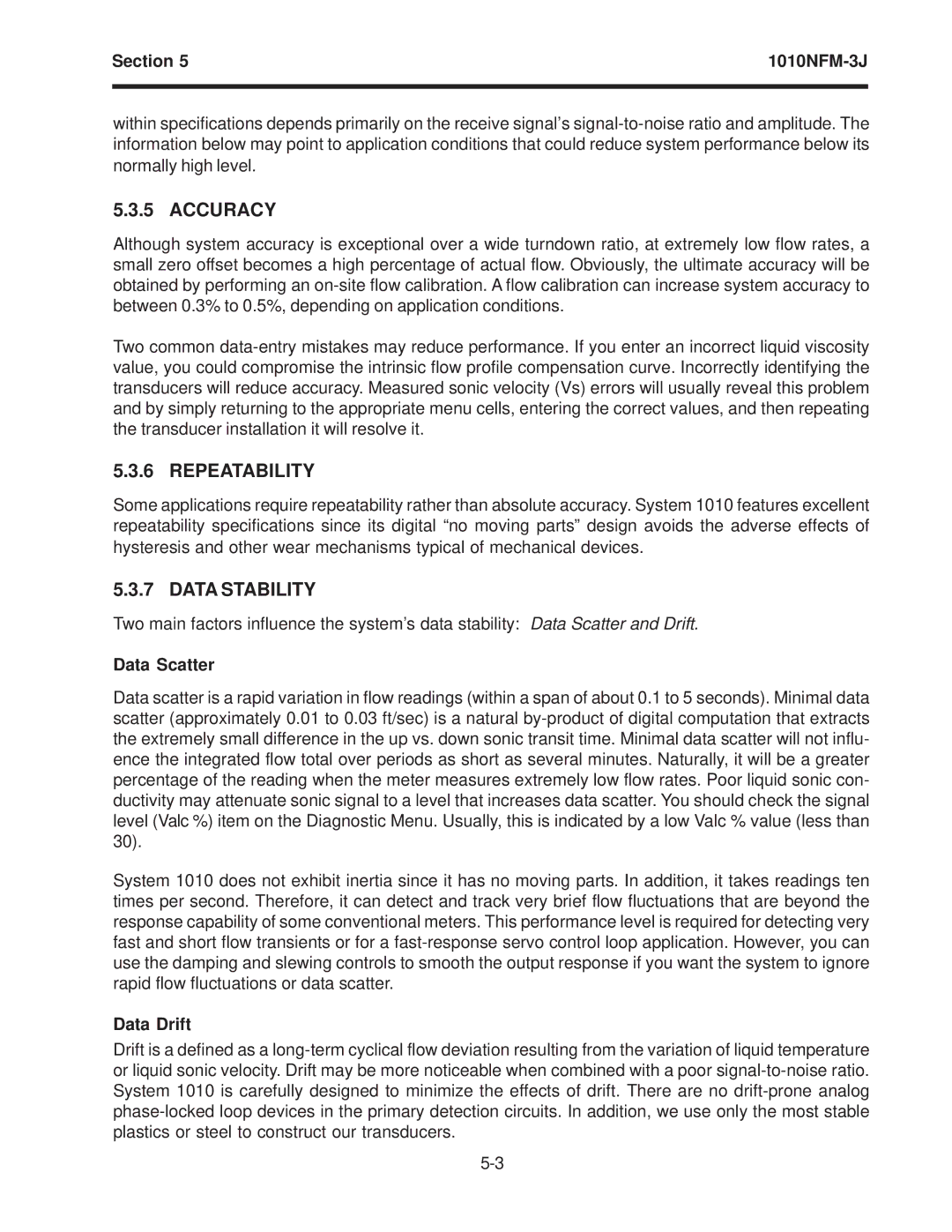Section 5 | |
|
|
within specifications depends primarily on the receive signal’s
5.3.5 ACCURACY
Although system accuracy is exceptional over a wide turndown ratio, at extremely low flow rates, a small zero offset becomes a high percentage of actual flow. Obviously, the ultimate accuracy will be obtained by performing an
Two common
5.3.6 REPEATABILITY
Some applications require repeatability rather than absolute accuracy. System 1010 features excellent repeatability specifications since its digital “no moving parts” design avoids the adverse effects of hysteresis and other wear mechanisms typical of mechanical devices.
5.3.7 DATA STABILITY
Two main factors influence the system’s data stability: Data Scatter and Drift.
Data Scatter
Data scatter is a rapid variation in flow readings (within a span of about 0.1 to 5 seconds). Minimal data scatter (approximately 0.01 to 0.03 ft/sec) is a natural
System 1010 does not exhibit inertia since it has no moving parts. In addition, it takes readings ten times per second. Therefore, it can detect and track very brief flow fluctuations that are beyond the response capability of some conventional meters. This performance level is required for detecting very fast and short flow transients or for a
Data Drift
Drift is a defined as a
